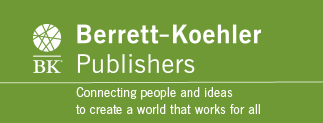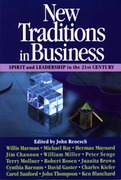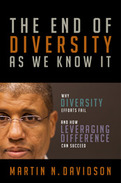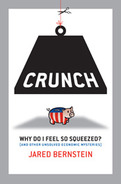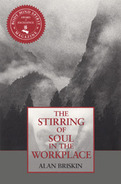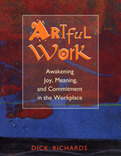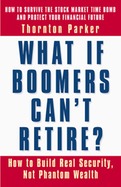A fundamental transformation-what many are calling a "paradigm shift"-is underway today in our business and work world. This transformation goes beyond the traditional quest for productivity and profit to embrace such issues as achieving more congruence between our spiritual values and our work, creating a more caring and loving workplace, empowering people to unleash their full creativity and vision at work, and recognizing the global and social responsibilities of business.
This book brings together fifteen of the foremost visionary thinkers about these new business traditions. These visionaries include leading futurists, such as Willis Harman; authors of important new books, such as Peter Senge, author of The Fifth Discipline: The Art and Practice of the Learning Organization; leaders of influential organizations in promoting new paradigm thinking, such as Charles Kiefer, chairman of Innovation Associates; and creators of innovative business and academic programs, such as Michael Ray, developer of the path-breaking Stanford University course on "New Paradigm Business." New Traditions in Business is the first collection in one book of their seminal writings.
Part I describes the historical roots and current signs of the transformation o how the new paradigm differs from traditional business practice o the shifts in human consciousness that form the context for the transformation o the role of spiritual values, vision, and community in the new business culture.
Part II details specific strategies for business transformation: new leadership roles to build learning organizations o the qualities of truly healthy companies o fostering community in corporations o steps for putting global thinking into practice in business o developing and communicating visionary leadership o creating empowered workplaces oenabling people to tap their full creative powers o keys to practicing ethical behavior in business.
The idea for this book came to Martin Davidson during a disarmingly honest conversation with a CFO he worked with. Look, the executive said, clearly troubled. I know we can get a diverse group of people around the table. But so what? What difference does it really make to getting bottom-line results?
Answering the so what? led Davidson to explore the flaws in how companies typically manage diversity. They don't integrate diversity into their overall business strategy. They focus on differences that have little impact on their business. And often their diversity efforts end up hindering the professional development of the very people they were designed to help.
Davidson explains how what he calls Leveraging Difference turns persistent diversity problems into solutions that drive business results. Difference becomes a powerful source of sustainable competitive advantage instead of a distracting mandate handed down from HR.
To begin with, leaders must identify the differences most important to achieving organizational goals, even if the differences aren't the obvious ones. The second challenge is to help employees work together to understand the ways these differences matter to the business. Finally, leaders need to experiment with how to use these relevant differences to get things done. Davidson provides compelling examples of how organizations have tackled each of these challenges.
Ultimately this is a book about leadership. As with any other strategic imperative, leaders need to take an active role-drive rather than just delegate. Successfully leveraging difference can be what distinguishes an ordinary organization from an extraordinary one.
- Offers an alternative that turns diversity from an organizational obligation to a source of innovation, energy, and commitment
- Analyzes why existing diversity programs have failed to be sustainable or to contribute to the bottom-line success of the organization
- Provides case examples from the authors research and global consulting practice
The idea for this book came to Martin Davidson during a disarmingly honest conversation with a CEO he worked with. Look, the executive said, clearly troubled. I know we can get a diverse group of people around the table. But so what? What difference does it really make to getting bottom-line results?
Answering the so what? led Davidson to explore more deeply how companies typically manage diversity. He saw there were serious problems. Companies werent effectively building diversity into their larger business strategy. Also, the emphasis on common differences like gender, age, race, and sexual orientation was interfering with the ability to identify less obvious differences that have more impact on a business. And traditional diversity efforts were often hindering the professional development of the very people they were designed to help.
In his book, Davidson explains how what he calls Leveraging Difference turns persistent diversity problems into solutions that drive business results. Difference becomes a powerful source of sustainable competitive advantage instead of a distracting mandate handed down from HR.
To leverage difference, Davidson argues, leaders must tackle three challenges. First, they must identify and hire for the differences most important to achieving organizational goals, even if the differences arent the obvious ones. Second, leaders must help employees work together to understand the ways these differences matter to the business. And finally, leaders must roll up their sleeves and experiment with how to use these relevant differences to get things done. Davidson provides several examples of how organizations leverage subtle differences like culture, thought, and personality as well as more noticeable differences like race and gender.
Ultimately this is a leadership book, not a diversity book. Actively leveraging difference, rather than reactively managing diversity, can be what distinguishes an ordinary organization from an extraordinary one.
2008
Is Social Security really going bust, and what does that mean to me? If I hire an immigrant, am I hurting a native-born worker? Why does the stock market go up when employment declines? Should I give that homeless guy a buck? What’s a “living wage”? How much can presidents really affect economic outcomes? What does the Federal Reserve Bank really do? And even when some pundits say the economy’s sound, why do I still feel so squeezed?
If you’d like some straight answers, premier economist Jared Bernstein is here to help. In Crunch he responds to dozens of questions he has fielded from working Americans, questions that directly relate to the bottom-line, dollars-and-cents concerns of real people. Chances are if there’s a stumper you’ve always wanted to ask an economist, it’s solved in this book.
Bernstein is fed up with “Darth Vaders with PhDs” who use their supposed expertise to intimidate average citizens and turn economics into a tool for the rich and powerful. In the pages of Crunch, Bernstein lays bare the dark secret of economics: it’s not an objective scientific discipline. It’s a set of decisions about the best way to organize our society to produce and distribute resources and opportunities. And we all can, and must, participate in these decisions. “America is a democracy,” he writes. “And in a democracy all of us, not just the elites and their scholarly shock troops, get to weigh in on biggies like this.”
To not weigh in, Bernstein insists, is a profoundly political act, one with damaging consequences. Our economy will be only as fair as we can make it. In this lively and irreverent tour through everyday economic mysteries, Bernstein helps us decode economic “analysis,” navigate through murky ethical quandaries, and make sound economicdecisions that reflect our deepest aspirations for ourselves, our families, and our country.
- Winner of the 1997 Body Mind Spirit Book Award of Excellence
1995
Work and art are not, as we have come to believe, mutually exclusive. The industrial revolution, it can be said, drove art out of work. Our new-found ability for mass production robbed workers of their art, forcing them to find "jobs." Work quickly came to be viewed as something we do to survive and art merely something to hang on our walls. The reward for work became extrinsic rather than intrinsic. Instead of pursuing joy within work, we began to pursue it in leisure and in the external rewards of employment.
In Artful Work, Dick Richards reminds us that all work can be artful, and that artfulness is the key to passion and commitment. He applies the assumptions of artists about work and life to the challenges facing people and organizations in today's rapidly changing world. This book provides a new perspective on those challenges that is both practical and visionary, singing a provocative new tune for those journeying to make work more meaningful and joyful, and organizations more committed to their purposes. Readers will learn to take an inspired approach to their work, renewing their experience of it as a creative, participative, and purposeful endeavor.
There are seven basic assumptions of the concept of Artful Work:
o All Work Can Be Artful
o The Reward for Artful Work Is In the Doing
o The Ambition of Artful Work Is Joy
o All Work Is Spiritual Work
o Artistry Demands That the Artist Own the Work Process
o Artful Work Requires Consistent and Conscious Use of the Self
o As the Artist Makes the Work, the Work Makes the Artist
Artful Work sets forth an entirely new way of thinking about all of the work we do, and the organizations that contain our work. It offers a compelling guide to honoring artistry in our work, organizations, and leadership roles, and creating workplaces that truly honor our passion. It speaks to the courageous and hopeful among us who seek to make our work and workplaces more joyful and productive.
- Applies an artistic perspective to the challenges facing people and organizations today
- Shows how to bring all four human energies-physical, intellectual, emotional, and spiritual-together in our workplaces
-
Debunks the popular but dangerous myth that inflating stock prices creates national wealth
-
Reveals what can be done to avert potential disaster for future retirees and the nation
-
Shows readers how to evaluate the long-term effectiveness of their retirement portfolios
